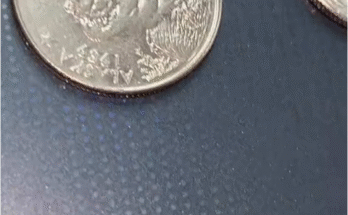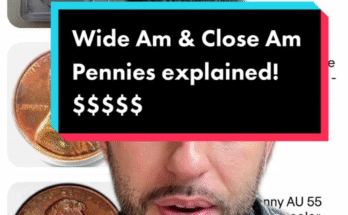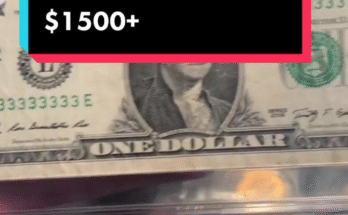🎥 Watch the Video First!
Before you scroll down, don’t miss Coin Teacher’s full breakdown 🎬 — he shows real close-up footage of this penny under a microscope so you can see exactly what to look for.
👉 [Watch the Full Video Here] (embed your YouTube link right below this line)
🪙 What Makes This Penny Worth Over $200?
In this lesson, Coin Teacher reveals how ordinary-looking Lincoln cents from 1998, 1999, and 2000 can hide a secret minting error known as the “Wide AM” variety.
One verified 1999 Wide AM penny even sold for $216 at auction, proving that pocket change can turn into profit! 💵
🔍 Step-by-Step Guide: How to Spot the “Wide AM” Error
1️⃣ Find the Right Date
Search your pennies from these years:
- 1998
- 1999
- 2000
These are the only three years where the valuable “Wide AM” variety exists.
2️⃣ Flip to the Reverse (Back)
Look at the word “AMERICA.”
Focus on the letters A and M.
🧐 The Key Difference:
- Wide AM (Valuable): The A and M are clearly separated — there’s visible space between them.
- Close AM (Normal): The A and M are touching or nearly touching.
💡 Tip: Use a 10× to 30× magnifier or a small coin microscope to see the spacing clearly.
3️⃣ Confirm With the Year
- 1998 and 2000: Most coins have Close AM, so Wide AM is the rare error.
- 1999: Most have Wide AM, but the rare one is the Close AM version — yes, it’s reversed! 🤯
💰 Real-World Value
| Year | Error Type | Typical Value (Uncirculated) | Record Sale |
|---|---|---|---|
| 1998 | Wide AM | $50 – $150 | — |
| 1999 | Close AM | $200 – $600 | $216 (auction example) |
| 2000 | Wide AM | $50 – $200 | — |
💵 Condition matters! A certified high-grade coin from PCGS or NGC can bring even more.
⚠️ Expert Tips from Coin Teacher
✅ Always verify spacing between the A and M — small differences make big money.
✅ Never clean your coin — it destroys collector value.
✅ Use professional grading for coins worth over $100.
💬 “Even a single Wide AM in your change could cover a full tank of gas—or more!” — Coin Teacher



Leave a Reply